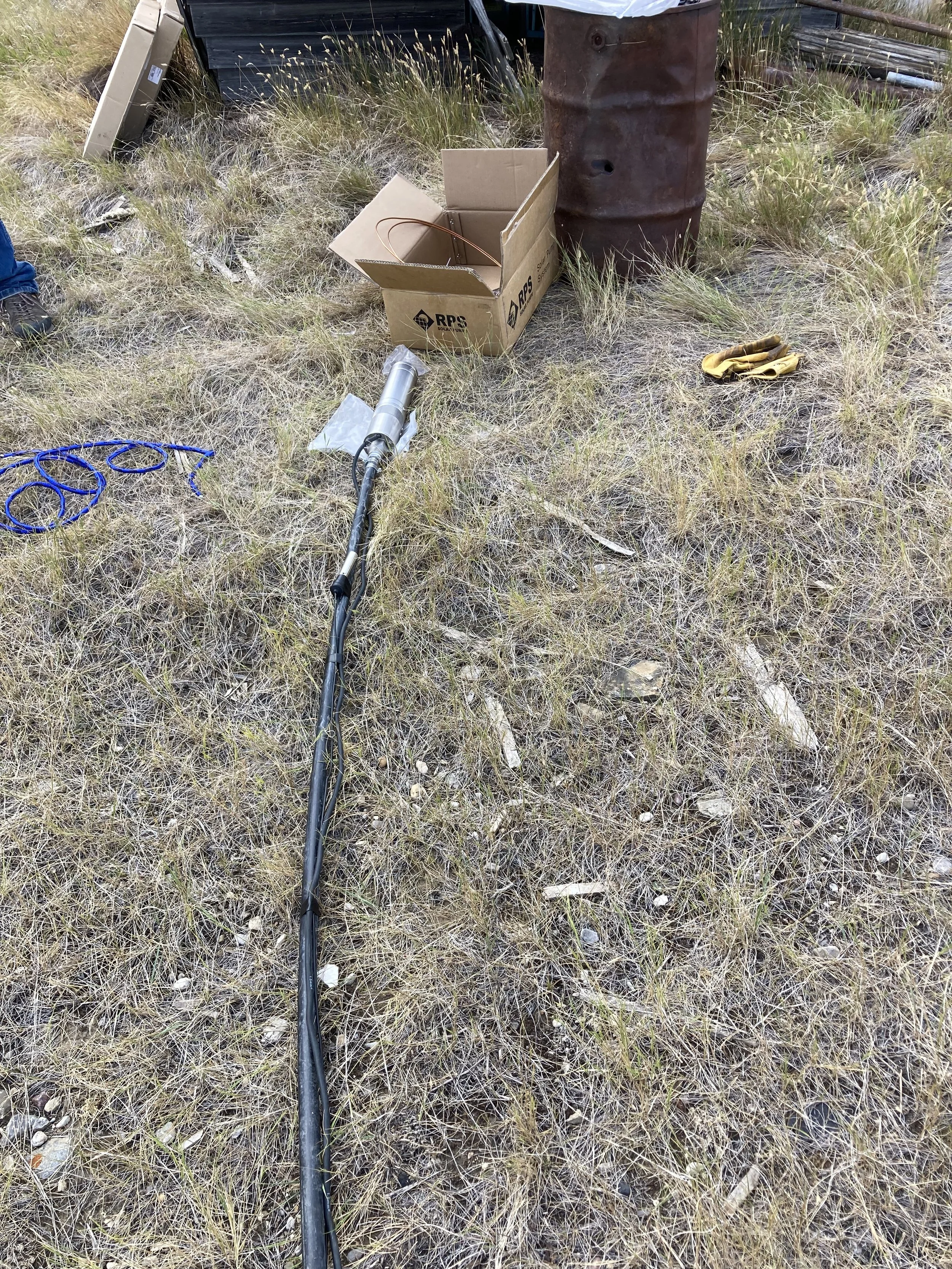Testing the Water
Three boxes of parts were about to determine my entire future.
If these parts didn’t bring water to the surface, I would sell all that is left of my cows and sheep.
Fortunately, the parts came with directions.
I hoped those directions might guide me out of the corner I had backed myself into.
Only a few raindrops and many grasshoppers had left no grass.
A cool spring and a hot summer delivered only a little hay to my stackyard.
So I’ve been scrambling.
Meanwhile, like cash stuffed under the mattress, my field of grass grew just over the hill.
It isn’t fenced, but I have harvested hay there in the past.
I chugged my swather up the hill, managing to avoid hitting all of the highway markers and most drivers with my 21-foot header.
Four hours of swathing later, six bales lay scattered across 30 acres.
I leaned against the pump house, discouraged and wondering how to haul more livestock to the sale.
But that pump house just might rescue me.
If the well inside had enough water, I could fence this field and graze the cattle.
Heck, half the fence was practically new – it had been built after our baler caught on fire a few years ago and burned up the old fence.
But before I invested in fencing, I had to know if the well had enough water.
I dug through my shop and found the three boxes with the pump and four solar panels that I had purchased last year, but never opened.
I had never dealt with solar panels before, never dropped a pump into a well before – at least in a way so that I could get it back out.
I pulled the directions from the box.
Step by step, with words and pictures, I became friends with the pump company.
I knew we would be buddies by page 3 when the text screamed:
“Don’t lower the pump down the well yet! You will do that in a minute.”
The boxes held almost everything I needed, except 100 feet of submersible wire designed for wells.
Supply chain issues delayed my test for a couple of days while my livestock grazed shorter grass.
The time clock ticked louder.
I finally made a phone call that yielded the right answer and I raced 75 miles to buy the wire.
A friend helped me connect the pump and panels.
That’s when we realized that the safety rope that would pull the pump out of the well was too thick to fit through the holes on the pump.
Fortunately, I had twine in my truck.
By 5 p.m., we were ready to flip the switch.
I held my breath.
The control panel blinked “Low water.”
My vocabulary shrank to fundamental expressions of despair -- until I realized we had not connected the low water sensor yet.
A few twists of the screwdriver solved that problem.
The switch turned on, the control panel blinked all systems working and thunder clouds rolled in.
The solar panels wouldn’t generate power.
As soon as chores were finished the next morning, I was back up on the hill, holding my breath, refusing to think about what I would do if this system wouldn’t pump water.
In spite of my determination, images of a green Walmart greeter vest flashed through my mind.
I flipped the switch.
The control panel blinked.
A trickle of water poured from the pipe.
I almost cried.
I could live with a trickle.
I let the pump run while I puttered around for a few minutes.
When I came back, the full pipe was spewing liquid gold, more than enough to sustain a cow herd.
Life is good.
